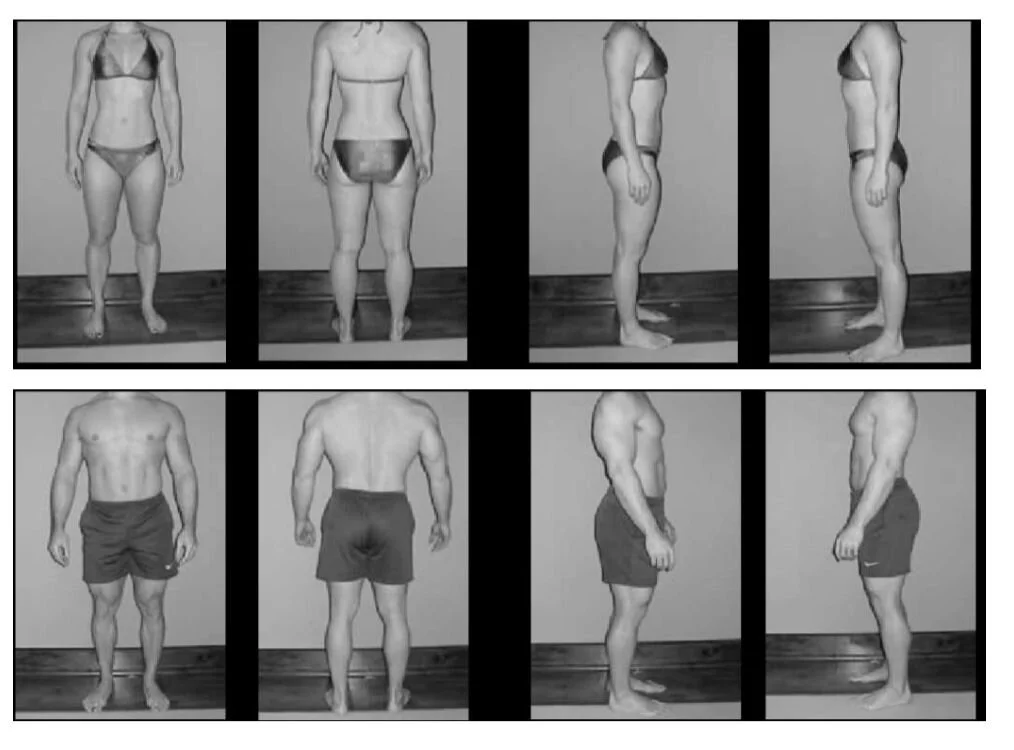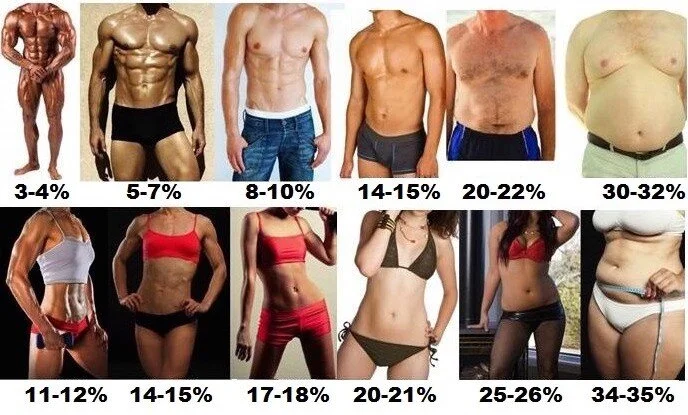5 Simple Ways to Know if Your Making Progress
There is a well-known coach proverb, “if you’re not assessing, you’re guessing.” This is true, especially for those individuals consistently working hard within the gym week in, week out. However, even if you aren’t a gym rat, you probably want to know what progress you’re making. Why should you measure your progress? There is no feeling quite like seeing how far you have come since started training.
While there are a multitude of ways to assess your overall progress, however these are my five preferred methods of tracking overall progress.
1) Progress Pictures
“If you don’t like what you see in the mirror, what difference does it make what the scale says?” – Vince Gironda
In my opinion, this is the best way to track progress. Let’s be completely honest here: you are working out to both look and feel better. While I want you to focus on how you feel and look in your clothes, I understand you want to look better naked too.
During your honorable pursuit, there will be days when you are lacking motivation. You’ll feel what you’re doing isn’t working, you are tired of tracking your nutrition, and you hit a plateau. I get it. I have been there. During those moments, looking back at your progress pictures will help you realize the progress you’ve made. For that reason, I highly suggest you take a baseline photo so when you look back, you’ll know
Use your smartphone in good lighting, saving the photos in their full size, without additional texts or filters. Either have someone else take the photo or use your phone’s self-timer. Stand behind a plain background or white wall for we want the attention to be on your, not the clutter in the background. Make sure you include your face in the photos, so you can plainly see your transformation in your before and after photos.
You want to take three photos: Front, side, and back. These perspectives will give you a good overall view of your physical changes. Make sure you’re in the same pose in the before/after photos so we can truly gauge your transformation. Don’t suck in your gut or push it; it’s time to see the REAL YOU!
Use these photos below as your guidelines for taking your progress photos
When to take your progress photo
Progress photos should be taken at the beginning of your fitness journey, then preferably every 2-4 weeks in regular intervals.At the beginning of your journey, I strongly recommend you take your progress photo every 4 weeks as it takes time for your body to properly respond to your training.
Here are a couple of tips when taking your photo:
Take photos at the same time
Wear the same clothes
Use the same lighting and background
2) Body Circumference Measurements
With your training program, we’ll be using the scale weight and body circumference measurements to help gauge muscle growth and fat loss in different areas.
Often, we can infer that if your measurements are decreasing (i.e. your waist circumference), you’re probably seeing fat loss. Conversely, if your measurements are going up (i.e biceps), then you are experiencing muscle growth.
Starting TODAY, you must take body measurements with a tailor tape and record them on your accountability tracker.
I want you to measure the following body sites:
Waist Measurements
Take your waist measurements twice weekly, ideally Monday and Friday. Regardless of what’s happening on the scale, if your waist is shrinking, you’re losing body fat.
Record each measurement to the 1/8 inch and write them down in your accountability tracker. Here’s a short how-to video to get started.
Arm, Chest, Thigh, Waist, and Hip Measurements
By tracking the rest of your body (arms, chest, thighs, and hip), we’ll get a better view of your overall progress. Here’s a short how-to video to get started:
Take measurements all at once, ideally when you’re doing your progress photos.
3) Body Fat Percentage
While losing weight is a decent goal to have, reducing overall body fat is ultimately what you should strive for. Your training should be helping you look and feel better while reducing your overall body fat percentage. Being overweight has a cascade of negative health effects from increased risk of heart disease, and higher rates of cancer, so the more body fat you lose the better it will be for your overall health.
So, what is body fat? Simply put, body fat is the amount of fat in your body compared to everything else, including your organs, muscles, tendons, water, etc. Both men and women carry different amounts of body fat percentages due to…. well… being different.
Body fat measurements are a common form of measurements. In fact, body fat measurement is my preferred indicator of overall progress. Unfortunately, body fat measurements are more difficult and in-home devices are a minefield. The ideal measurement tools are either underwater measuring stations or DEXA machine, however these methods can be expensive and hard to come by. The most common low-cost body fat measurement tools are bioelectrical impedance. These tools come in all shapes and sizes and work by measuring the flow of electrical current sent through the body. Unfortunately, these tools have a wide range of being inaccurate.
Even if you don’t possess a body fat measurement tool, you are able to visually estimate your current body fat percentage. All you need to do is take off your shirt (first find a private spot to do so), look at yourself in the mirror and compared yourself to the pictures below.
4) Tracking Gym Performance
One of my biggest pet peeves is when I see hard working individuals busting their asses in the gym, yet not taking the 5 seconds to write down either their workouts, weights, or anything.
Quick question: how do you know if you are making progress, if you don’t any data to look back upon?? Do you actually know what you are doing and how long your workouts should be? Or are you wondering around the gym like a lost sheep, looking for what’s the next “fun” thing you can do? If you are serious about getting results, you’ll need to start tracking your workouts. What does tracking your workout and progress looks like? It begins with having a workout plan in place and writing down what you did. For example:
If you did 5 sets of 5 reps of back squats at 225 last week, then you’ll need to do 5 sets of 5 reps of back squats at 230+lbs the following week to get stronger.
If you did 3 sets of 5 pull ups last week for a total of 15 pull ups, then you’ll need to do 16+ pull ups the following week to get stronger.
This ultimately boils down to having a plan of action while in the gym. You should know what kind of goal you want, whether it’s to build muscle or shred body fat, or a performance goal (i.e. bench press 225lbs, or squat 315lbs). Whatever you goal is, devise a plan of action and follow it will both passion and intensity. Ultimately, you get what you put in.
5) The Scale
Finally, we have the scale. For the record, I think the scale can be a usual tool. However, the scale should not be the primary metric to monitor progress as scale weight doesn’t tell the whole story.
For one thing, fat loss is never linear so don’t expect to lose weight every single day. Seriously don’t. You just set yourself up for unrealistic expectations. On a day-to-day basis, your body weight can fluctuate for countless reasons.
Instead of obsessing with the day-to-day scale weight, you want to look at your progress from a week to week or month to month basis.
You want to look at overall trends in your body weight.
Make it stand out
Whatever it is, the way you tell your story online can make all the difference.
On a biweekly or monthly basis, you want to check if your average weight is consistently dropping. A consistent downward trend of 1-2lbs per week is excellent progress as this is a realistic rate of fat loss.
Pro tip: Before weighing yourself, make sure it’s the first thing you do in the morning after going to the bathroom and before drinking or eating anything.
Also, too many people allow the number on the scale to radically impact their mood and how they feel about themselves. In short, they are allowing the scale to control their life and why I purposely left the scale at the end on how to measure. progress. The scale is simply another tool to assess and monitor your progress. Just don’t forget that there’s plenty of other methods, as I listed above, that are as equally valid. and useful.
Here’s how these techniques work together to get you better data and results
Let’s say you been training your butt off for weeks. You have been consistent and working hard within the gym and on your nutrition. You step onto that scale and it doesn’t move. Most people would get angry and think their program isn’t working.
However, you can look at your progress photos to see that your body looks leaner. By tracking your body circumference measurements, you noticed that your waist measurements are decreasing while your glutes, arms, and/or chest is growing.
It’s at that exact moment, you know your program is working because you are gaining lean muscle while losing body fat. Even though your scale weight hasn’t gone down, there are some very good things happening to your body.
By using these three methods you can get better information on the changes that are truly happening within your body. By looking at all the information, we’ll know if we need to make an adjustment to your plan. This gives you the power to know if you should change up your program or stay the course and enjoy the gainz.
Hopefully, you realized by now that the scale is a terrible way to accurately assess if you are making progress towards your body compositional goals. Yet, when you combine the scale with progress photos and body circumference you get much more accurate information.




